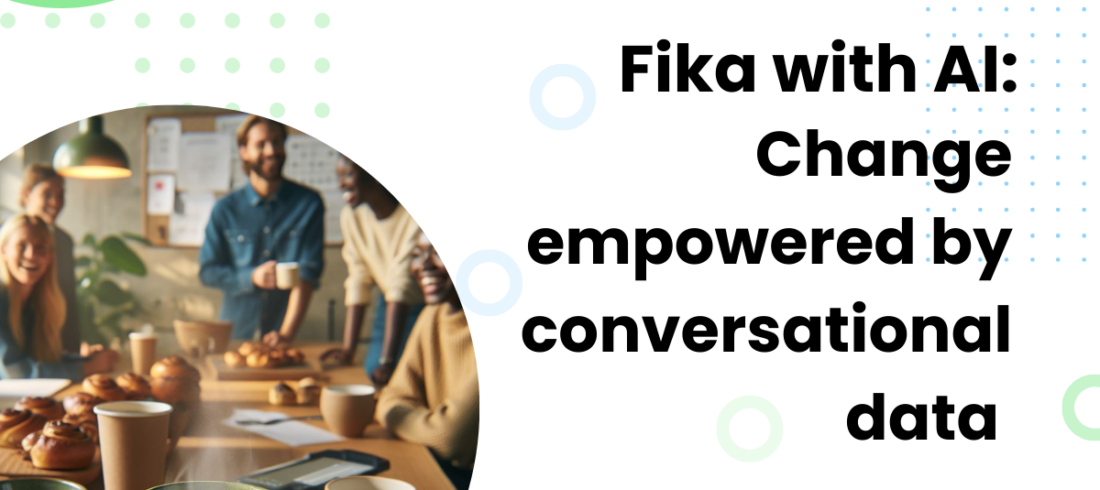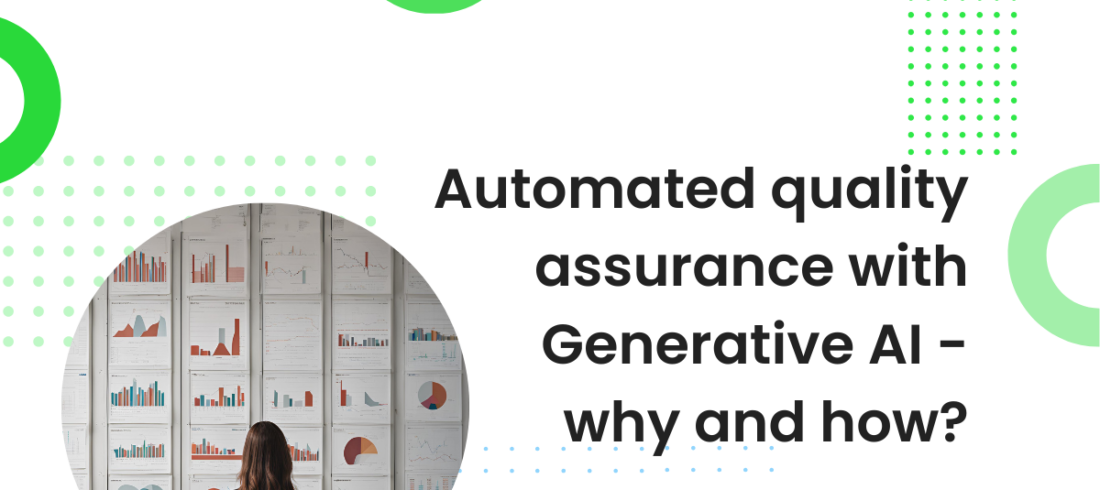There are a variety of user personas that we have found can benefit from customer conversation analysis. There are also various titles and goals behind those personas. Today we’d like to share with you different user personas. We want to showcase how customer conversation analysis can have a wide impact for the entire company if used wisely and widely. We want to treat this article as a way of inspiring and showing how one tool can benefit many.
Quality-focused
Quality-focused people in companies can be for example Team Leads, Quality Analysts, Trainers, Quality Coaches, Support Material creators, Quality Managers. There are a variety of people that want to analyse and work on the quality of service that is provided to the customers and look at that from various aspects.
Quality of service can be seen through setting quality standards, having an overview of the performance of the Agents and Teams, finding issues and dealing with them, and finding training needs and opportunities.
Here is where customer conversation analysis is key. As the regular process of quality coaching in service centres is a combination of randomised sampling and assessment, it is not an exact science. Manual assessment can also be quite subjective. Setting specific quality standards and monitoring the call flow accordingly can easily point out improvement areas. Even more so, using an automated call quality scoring system to have an objective overview of all the calls that are made takes it a step further. Please read about the benefits of that from the dedicated article.
One of our customers is highly focused on quality. We can see that as they use our conversation analysis platform to assess the calls in a unified systematic way. They listen to calls and read transcripts as needed and use our tool in their daily coaching activities.
Efficiency / Process-focused
Efficiency, cost-cutting and cost management are always important, but we see from our customers that their focus on efficiency is growing with each year. The titles or roles we associate with finding efficiency are for example Process Lead, Process Manager, Analyst, Development Manager. As companies and structures vary, there are plenty more of those roles.
Efficiency is all about streamlining processes, finding process errors and improvement points, also measuring the impact of process issues and changes. As we do not work in a vacuum, anyone dealing with process management must be aware of everything else that is going around in the area, There is a lot that can have an impact on their process. It’s crucial that these people can find issues and see patterns, thinking very analytically.
Customer conversation analysis, especially when implemented across multiple conversation types such as calls, chats, and emails, can give an overview of the various processes that impact the customer. There are simple things that we can see as hints for process errors. For example, customers complaining that they cannot understand the process or long wait times. What is critical is going back and forth and not being able to achieve first call resolution (FCR). This list really can be quite long.
Giving process owners the chance to analyse customer conversations, measure the issues in terms of cost created via those conversations, prioritise and measure the impact of changes is empowering.
Sales-focused
These days, when we ask which calls companies identify as ‘good calls’ that they wish to have more of, it’s any call where the customer makes a purchase. This can be made either from a specific sales call or an incoming support call being turned into a sale. The roles that are interested in analysing those opportunities are for example Sales Team Lead, Sales Manager, Sales Strategist, Head of Revenue, and Sales Trainer.
Sales performance is generally measured against sales numbers. It is also possible to analyse the successful sales calls to find the best sales practices and see where the sales reps could improve. One can validate sales approaches and see what makes or breaks a sale.
What can help with those objectives is using models that identify sales potential and add that as a layer on top of conversation analysis. Tapping into the unused potential and finding sales leads from existing conversations with customers can increase the sales for a company.
Team or department development focused
Whereas the previous personas are very specific to quality, efficiency, and sales, we see that there are some roles such as Team or Department Lead and Development Manager that need to have an overview of a variety of use cases and topics. It’s important to see the performance, quality, content – everything that surrounds the department or team.
These people need to have easy access and the option to create reports that give overviews of current focus areas. They always want to find out as soon as something unwanted is happening or a new issue appears.
From our experience, people in these roles are generally highly analytical. They often also benefit from the support from business analysts within their teams. We have also seen department leads show the way for others in using analytical thinking. Creating joint focus projects is a good way to move the entire company in a new and improved direction.
Product owners
Product Owners are a very specific user persona and user type in customer conversation analytics. Whereas Product Owners may have different ways of gathering feedback in the product development process, once a product is live and people have their hands on it, customer conversations are a great way to get feedback.
Product Owners or Product Managers have very specific interests. They need to have an overview of the feedback and validate hypotheses. They also want to find and measure issues around their products and prioritise developments.
One thing that we see is very impactful for this role is giving the product owners the ability to look at all the content about their product with all personal data masked (customer names, personal identification codes, etc). Many roles rarely get the chance to get access to customer conversations due to security concerns. Read this article on how data masking can enable the entire company access customer conversation for analytics. This is definitely a game-changer for Product Owners.
Can you imagine being able to measure every single issue with the cost of customer conversations compared to (or along with) the cost of development, and make decisions based on that? Magic!
Marketing focused
Last, but not least – let’s talk marketing. There’s a lot to be found in customer conversations for roles such as Marketing Analyst, Marketing Strategist, Campaign Manager, and others.
Customer conversations hold feedback about advertisements, campaigns, and competitors. This is all valuable to understanding how customers perceive marketing activities of the company and of its competitors.
If you launch a new campaign that should lead the customers to your online store to buy new products, but instead they keep calling to support about the terms and asking a lot of specifying questions, that is something to take notice of. If you want to know how customers perceive your competitors, the best way is to see in which context they are mentioning them.
Supporting the user personas and users with skills and knowledge
From our experience, business analysts and analysts in general can be great supporters of these user personas when analysing customer conversations. Not everyone has the background, expertise, or even the wish to learn text analysis, but the impact from customer conversation analysis can be very wide-ranging as shown above.
We also wish to support our various user personas and users through talking about success stories, positive examples, and use cases from our existing customers. All our users can access a Knowledge Base of articles to see user-manual-like “how-to” articles and use case examples. Our team has experience from different positions within customer centres and in large enterprises. We know the ins and outs of what it takes to being a successful Agent or leading an entire service centre. This is what has led us to where we are now.
If you wish to read more about different use cases with different time perimeters, also make sure to check out this article with 17 use case examples of a variety of time frames.
If you wish to discuss how you could use our conversation analysis tool to make a positive impact in your company, get in touch and book a demo call. We will be happy to share our excitement with you!




